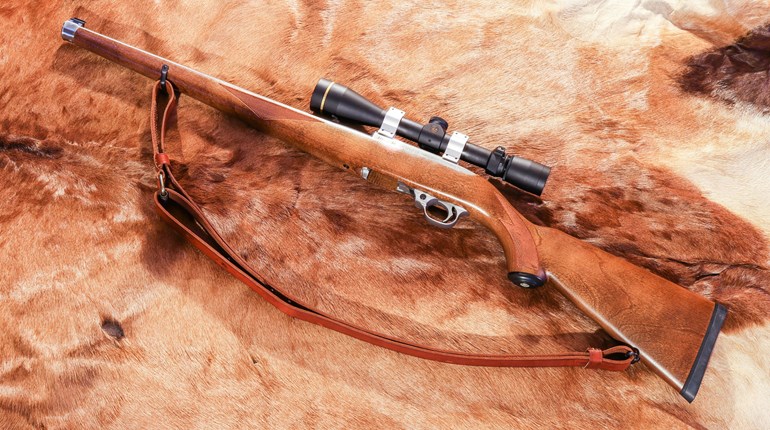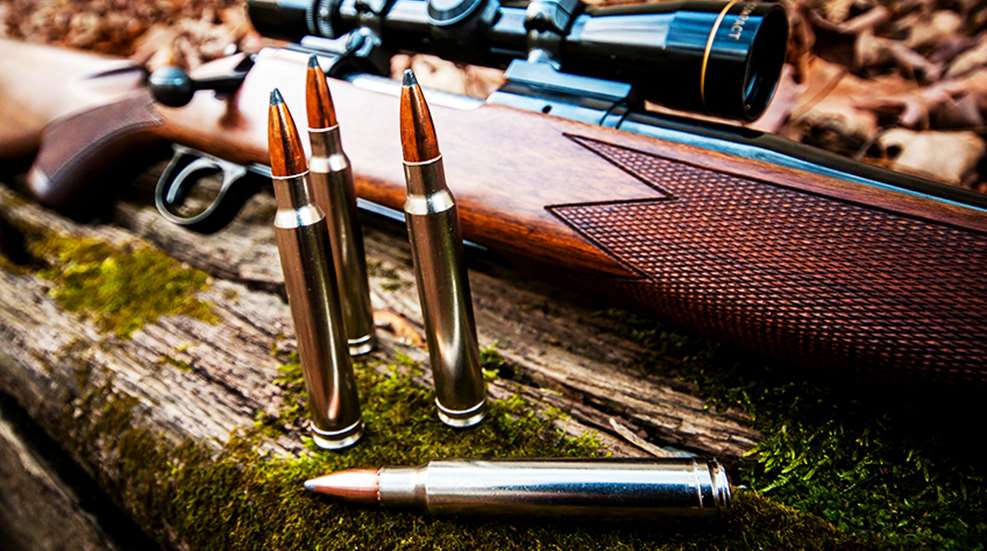
The late 1970s wasn’t an especially notable period in cartridge development; like much else during that period of economic stagnation, there just weren’t a whole lot of new releases. The 50s and 60s saw a barrage of new cartridges, many of them going on to become classics, but the 70s—not so much.
Not everyone was idle; Remington announced a new magnum cartridge in 1978: the 8mm Remington Magnum. Based on the full-length .375 Holland & Holland belted case, Remington’s 8mm Magnum represented the first commercial 8mm magnum cartridge to be introduced by an American firm. Remington offered two loads for the Big Eight: a 185-grain load at 3080 fps and a 220-grain load at 2830 fps, with both loads generating just about 3,900 ft.-lbs. of energy at the muzzle.
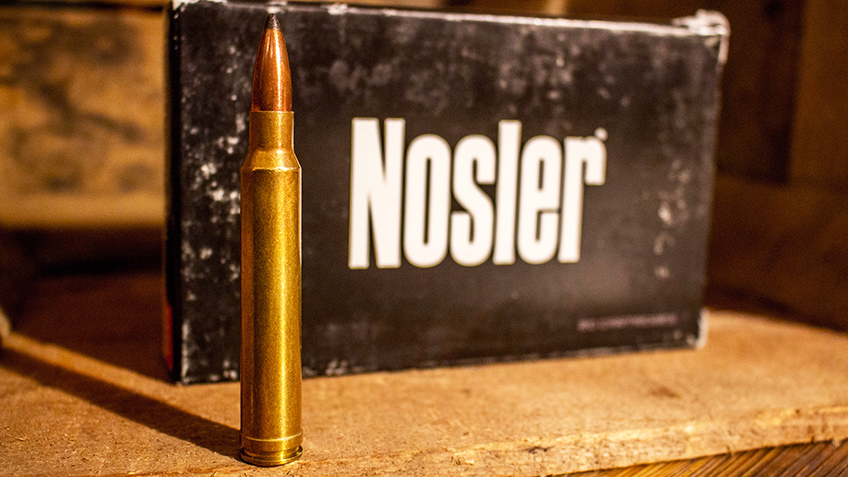
The 8mm (.323-inch) bore diameter uses bullets weighing between 125 and 220 grains, and the big Remington case can certainly push them to a respectable velocity, but the immediate comparisons were drawn to both the .300 Winchester Magnum and the .338 Winchester Magnum. Both of those cartridges are based on the standard .30-06-length action, while the 8mm Remington Magnum requires the longer magnum-length action. While this isn’t a big deal to the shooter—the bolt pull is only 0.375-inch longer—the manufacturing costs are much higher due to the number of magnum receivers produced.
In addition, while the 8mm bore is a perfectly viable choice for the big-game hunter, American shooters are historically hesitant to embrace metric calibers. The 8mm Remington Magnum does give a slight velocity advantage over the .300 Winchester Magnum, but I highly doubt any game animal could ever tell the difference between a 180-grain .308-inch bullet at 2960 fps and a 185-grain .323-inch bullet at 3080 fps. Yes, there is a greater frontal diameter with the 8mm, but the .30-caliber offers a higher sectional density.
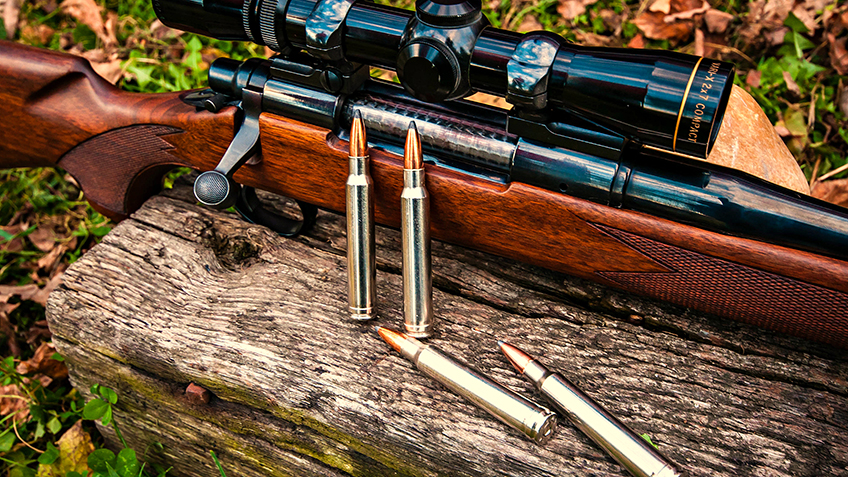
On the other end, the .338 Winchester Magnum offers a selection of bullets from 185 grains to 250 grains; while the 8mm gives a shooter the option of the lighter 125- and 150-grain bullets—the big 8mm Magnum will absolutely give the best results with bullets from 170 grains to 220 grains. So, with the .338’s heavier bullet and a 30-year head start, it isn’t hard to understand why the 8mm had an uphill drag from the get go. It’s not the fault of the design; with a 25-degree shoulder for good headspacing—the belt is just a carryover from the H&H design and serves no real purpose—the case capacity of the 8mm Remington Magnum is a good match for the bore diameter. Holding 99 grains of water, the 8 Mag. certainly delivers magnum performance, yet isn’t grossly overbore; however, the best ballistics and accuracy seem to come from the 26-inch barrels.
Over the last 40 years the 8mm Remington Magnum has had brief moments in the sun; gun writers like Charles Askins, Craig Boddington and Cameron Hopkins have used it with good effect and have sung its praises, and I’ve handloaded the cartridge for a good number of customers. I’ve found that those who’ve adopted the 8mm Rem. Mag. are absolutely fanatic about its capabilities; those shooters and hunters ignore the comparisons to the .300s and .338s, and just continue to hunt with the 8mm.
In Europe, the much older 8x68mm S offers very similar performance to the 8mm Magnum, so it is not difficult to see why the international market wasn't exactly kind to the 8mm Remington Magnum either. The .325 Winchester Short Magnum, which came around in 2005, mimics the performance of the 8mm Magnum, but that cartridge hasn’t exactly had the warmest of receptions, either.
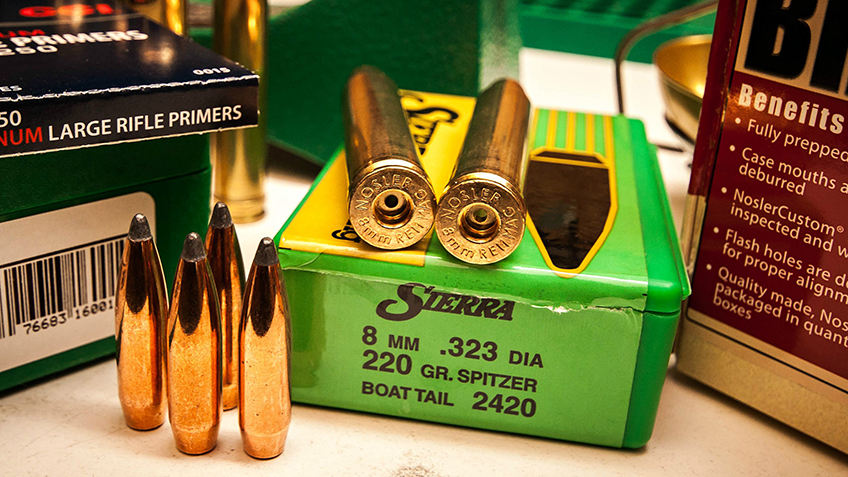
If you happen to find yourself on a big-game hunt with an 8mm Remington Magnum in hand, you could do a whole lot worse. It is, in fact, a perfectly viable cartridge for most of our hunting scenarios, but undoubtedly takes a back seat to both the .300 Magnums and the .338s. If you find a deal on a 8mm Remington Magnum rifle and you handload your own ammunition, I see no reason to turn it down. There are plenty of good bullets available, brass is available from a couple of good sources and handloading the Big 8 isn’t a difficult prospect at all. Powders with a burn rate of IMR4350 or slower should give you the results you’re after, and since the cartridge more than likely won’t be see high volume use, a couple hundred pieces of brass could last for decades.
The 8mm Magnum spawned a respectable little family, having sired the 7mm STW (Shooting Times Westerner), the .358 STA (Shooting Times Alaskan) and one of my favorite African dangerous game cartridges, the .416 Remington Magnum. Though it will continue its slide into obscurity, those fans of the 8mm Remington Magnum shall remain faithful, and for someone looking for an all-around choice which isn’t mainstream, the 8mm Rem. Mag. might fit the bill.
Looking for previous installments of our "Behind the Bullet" series? We've got you covered.
• .338 Federal
• .224 Valkyrie
• .338-06 A-Square
• 9.3x62mm Mauser
• .257 Weatherby Magnum
• .45-70 Government
• .300 H&H Magnum
• .25-06 Remington
• .30-06 Springfield
• 6.5 Creedmoor
• .300 Remington Ultra Magnum
• 7mm Remington Magnum
• .470 Nitro Express
• .280 Remington
• .300 Winchester Magnum
• .270 Winchester
• .222 Remington
• .45 ACP
• .404 Jeffery
• .44 Remington Magnum
• .41 Remington Magnum
• .243 Winchester
• .338 Winchester Magnum
• .357 S&W Magnum
• 6.5-284 Norma
• 8x57 Mauser
• .38 Smith & Wesson Special
• 7x57mm Mauser
• 9 mm Luger
• .35 Whelen
• .454 Casull
• .375 H&H Magnum
• .45 Colt
• .22-250 Remington
• 10mm Auto
• .308 Winchester















